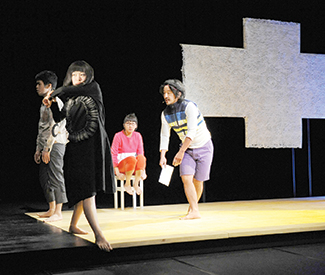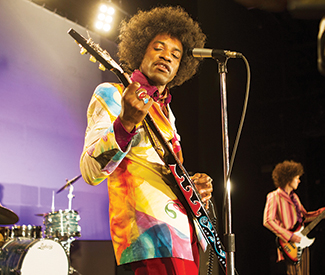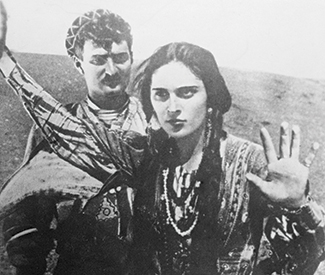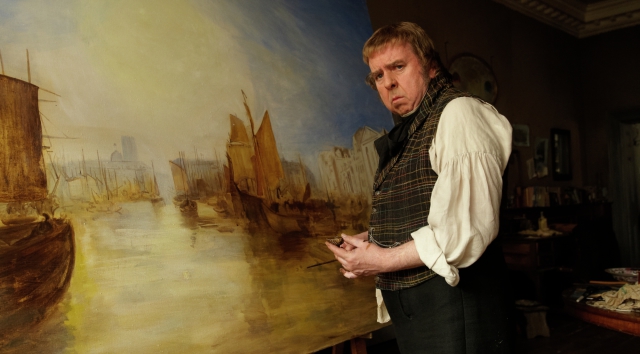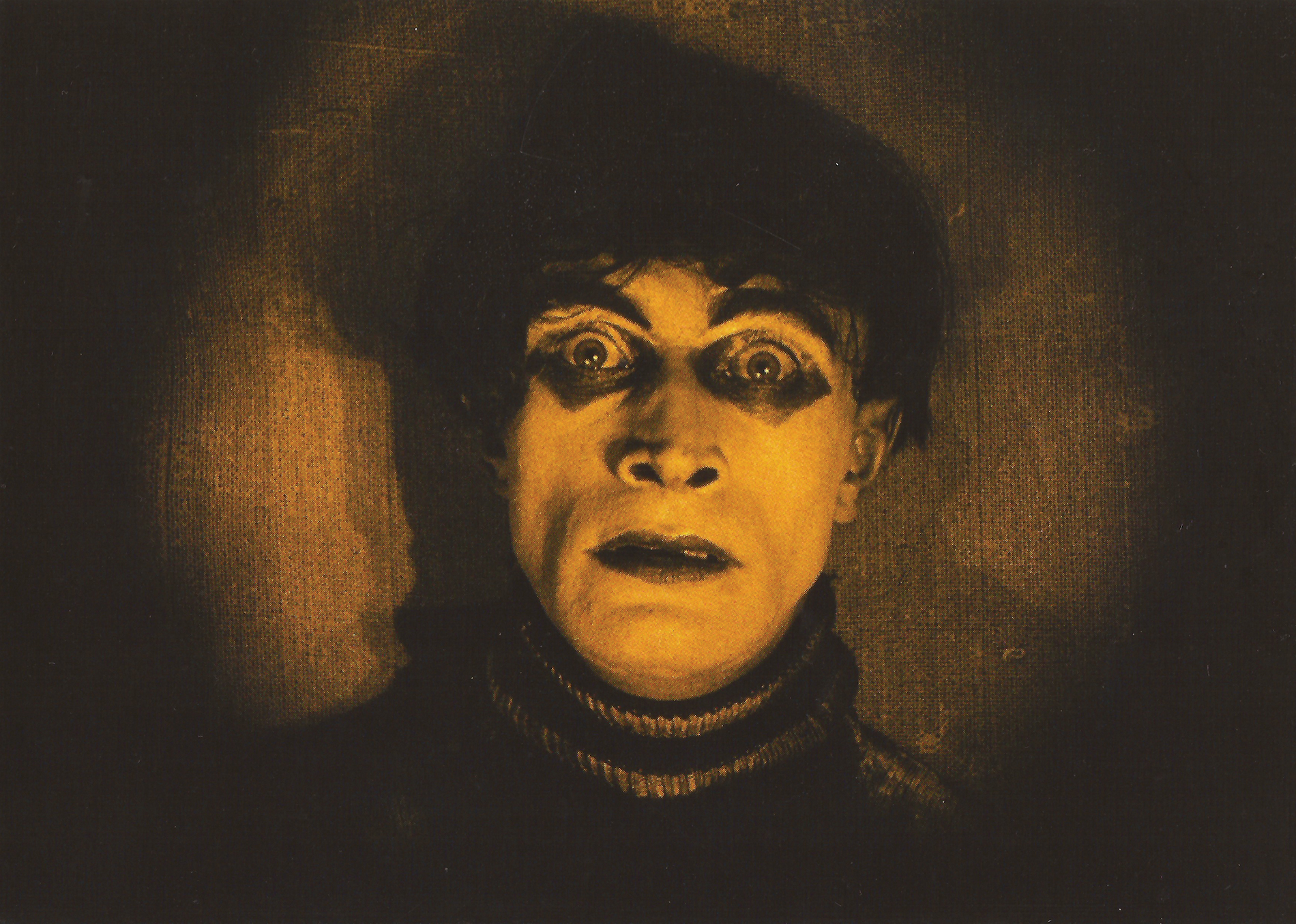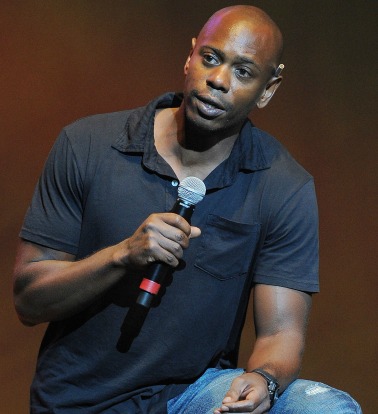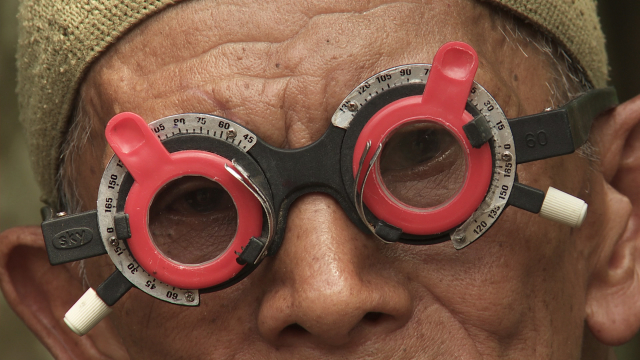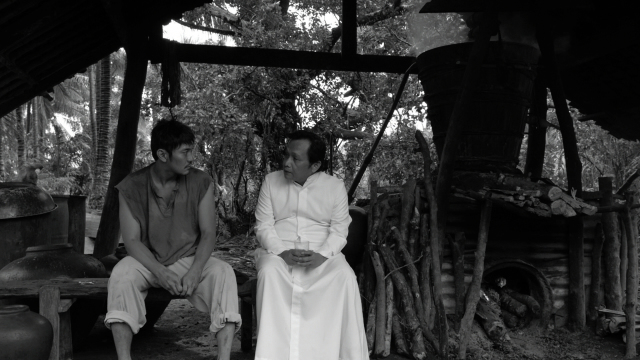Stage listings are compiled by Guardian staff. Performance times may change; call venues to confirm. Reviewers are Robert Avila, Rita Felciano, and Nicole Gluckstern. Submit items for the listings at listings@sfbg.com.
THEATER
OPENING
Ideation San Francisco Playhouse, 450 Post, SF; www.sfplayhouse.org. $20-120. Previews Sept 23-26, 8pm. Opens Sept 27, 8pm. Runs Tue-Thu, 7pm; Fri-Sat, 8pm (also Sat, 3pm; no matinee Sept 27); Sun, 2pm. SF Playhouse performs the world premiere of Aaron Loeb’s darkly comic suspense thriller.
The Late Wedding Thick House, 1695 18th St, SF; www.crowdedfire.org. $15-35. Previews Thu/18-Sat/20, 8pm. Opens Mon/22, 8pm. Runs Wed-Sat, 8pm (no show Sept 24). Through Oct 11. Crowded Fire Theater performs a world premiere commission by Christopher Chen, a “journey of the soul” inspired by the work of Italian fabulist novelist Italo Calvino.
Pippin Golden Gate Theatre, 1 Taylor, SF; www.shnsf.com. $45-210. Opens Tue/23, 8pm. Runs Tue-Sat, 8pm (also Wed and Sat, 2pm); Sun, 2pm. Through Oct 19. This all-new production of Roger O. Hirson and Stephen Schartz’s 1972 musical won the 2013 Tony for Best Revival of a Musical.
BAY AREA
Lovebirds Marsh Berkeley, 2120 Allston, Berk; www.themarsh.org. $20-100. Opens Fri/19, 8pm. Runs Fri, 8pm; Sat, 8:30pm. Through Oct 18. Marga Gomez brings her solo show to Berkeley after runs in SF and NYC.
ONGOING
The Barbary Coast Revue Sub/Mission Gallery, 2183 Mission, SF; www.barbarycoastrevue.com. $28. Sat, 8pm. Through Nov 29. Join Mark Twain on an interactive musical tour of Gold Rush-era San Francisco.
Cock New Conservatory Theatre Center, 25 Van Ness, SF; www.nctcsf.org. $25-45. Wed-Sat, 8pm; Sun, 2pm. Through Oct 12. New Conservatory Theatre Center performs Michael Bartlett’s comedy about a man who meets the woman of his dreams — while on a break from dating his boyfriend.
Each and Every Thing Marsh San Francisco Main Stage, 1062 Valencia, SF; www.themarsh.org. $20-50. Thu-Fri, 8pm; Sat, 5pm; Sun, 2pm. Extended through Oct 4. The latest solo show from celebrated writer-performer Dan Hoyle (Tings Dey Happen, The Real Americans) winds a more random course than usual across the country and abroad but then that’s the idea — or at least Hoyle warns us, right after an opening encounter with a touchy young white supremacist, that the trip he’s taking us on is a subtle one. Displaying again his exceptional gifts as a writer and protean performer, Hoyle deftly embodies a set of real-life encounters as a means of exploring the primacy and predicament of face-to-face communication in the age of Facebook. With the help of director Charlie Varon (who co-developed the piece with Hoyle and Maureen Towey), this comes across in an entertaining and swift-flowing 75-minute act that includes a witty rap about “phone zombies” and a Dylan-esque screed at a digital detox center. But the purported subject of connection, or lack there of, in our gadget-bound and atomized society is neither very original nor very deeply explored — nor is it necessarily very provocative in a theater, before an audience already primed for the live encounter. Far more interesting and central here is Hoyle’s relationship with his old college buddy Pratim, an Indian American in post-9/11 America whose words are filled with laid-back wisdom and wry humor. Also intriguing is the passing glimpse of early family life in the Hoyle household with Dan’s celebrated artist father, and working-class socialist, Geoff Hoyle. These relationships, rather than the sketches of strangers (albeit very graceful ones), seem the worthier subjects to mine for truth and meaning. Indeed, there’s a line spoken by Pratim that could sum up the essence of Hoyle’s particular art: “It’s so much better,” he says, “when you find yourself in other people than when you just find yourself.” Hoyle’s real frontier could end up being much more personal terrain, much closer to home. (Avila)
Foodies! The Musical Shelton Theater, 533 Sutter, SF; www.foodiesthemusical.com. $32-34. Fri-Sat, 8pm. Open-ended. AWAT Productions presents Morris Bobrow’s musical comedy revue all about food.
The Haze ACT Costume Shop, 1117 Market, SF; http://bit.ly/thehazeplayACT. $20. Thu, 7pm; Fri-Sat, 8pm. Through Sept 27. Heather Marlowe performs her solo show, a sharp-witted, autobiographical play about recovering from rape — and the way rape cases are mishandled by the justice system.
King Fool Various locations TBA to reservation holders; www.weplayers.org. $30-50. Fri-Sun, times TBA. Through Sept 28. We Players presents a new, intimate, site-specific work inspired by King Lear.
LongShotz: The Things That Separate Us Tides Theatre, 533 Sutter, Second Flr, SF; http://amios.wordpress.com. $25. Program B: Wed/17, 8pm. Amios presents two separate programs of three 30-minute plays, each written by a different author. Each play is inspired by the Radiohead lyric, “Just ’cause you feel it doesn’t mean it’s there.”
Motown the Musical Orpheum Theatre, 1192 Market, SF; www.shnsf.com. $45-210. Tue-Sat, 8pm (also Wed and Sat, 2pm); Sun, 2pm. Through Sept 28. Over 40 hits (“My Girl,” “Ain’t No Mountain High Enough”) pack this tale of Motown founder Berry Gordy’s career in the music biz.
Noises Off! Shelton Theater, 533 Sutter, SF; www.sheltontheater.org. $38. Thu-Sat, 8pm. Through Oct 25. Shelton Theater performs Michael Frayn’s outrageous backstage comedy.
Old Hats ACT’s Geary Theater, 415 Geary, SF; www.act-sf.org. $20-120. Opens Wed/17, 8pm. Runs Wed-Sat, 8pm and Sept 30 (also Sat, 2pm); Sun, 2pm; Tue/23, 7pm. Extended through Oct 12. American Conservatory Theater presents Tony winners Bill Irwin and David Shiner in the West Coast premiere of Signature Theatre’s story of “clowns getting older — and even crazier.”
San Francisco Fringe Festival Exit Theatreplex, 156 Eddy, SF; www.sffringe.org. $10 or less at the door; $12.99 or less online (passes, $45-75). Through Sat/20. Unique, daring indie theater (murder mysteries! Tech tales! Dating dramas! Clowns!), with 35 shows and 150 performances over 14 days.
Semi-Famous: Hollywood Hell Tales from the Middle New venue: Marsh San Francisco, 1062 Valencia, SF; www.themarsh.org. $20-100. Sat, 8:30pm; Sun, 7pm. Through Oct 19. Don Reed’s latest solo show shares tales from his career in entertainment.
Slaughterhouse Five Gough Street Playhouse, 1620 Gough, SF; www.custommade.org. $20-50. Thu-Sat, 8pm; Sun, 7pm (also Oct 5 and 12, 3pm). Through Oct 12. Custom Made Theatre Co. performs Eric Simonson’s adaptation of the classic Kurt Vonnegut’s semi-autobiographical novel.
The Taming of the Shrew McLaren Park, Jerry Garcia Amphitheater, 40 John F Shelley, SF; www.sfshakes.org. Free. Sat/20-Sun/21, 2pm. Continues through Free Shakespeare in the Park presents this take on the Bard’s barb-filled romance.
Too Much Light Makes the Baby Go Blind Boxcar Theatre, 505 Natoma, SF; www.sfneofuturists.com. $11-16. Fri-Sat, 9pm. Ongoing. The Neo-Futurists perform Greg Allen’s spontaneous, ever-changing show that crams 30 plays into 60 minutes.
BAY AREA
An Audience with Meow Meow Berkeley Repertory Theatre, Roda Theatre, 2015 Addison, Berk; www.berkeleyrep.org. $29-89. Tue and Thu-Sat, 8pm (also Sat, 2pm but no matinee Sat/20; also Fri/19 and Oct 16, 2pm); Wed and Sun, 7pm (also Sun, 2pm). Through Oct 19. British singer-comedian Meow Meow world-premieres her new show at Berkeley Rep, under the direction of Kneehigh’s Emma Rice.
Berlin to Broadway with Kurt Weill Masquers Playhouse, 105 Park, Point Richmond; www.masquers.org. $22. Fri/19, 8pm; Sat/20, 7pm. Masquers Playhouse performs a revue celebrating the life and work of Kurt Weill.
“Breaking Chains Festival” Various venues, Oakl (one venue in SF); www.ubuntutheaterproject.com. $15-25. Through Sept 27. New company Ubuntu Theater Project presents this festival of six site-specific works. Authors include Marcus Gardley, Tim Price, Clifford Odets, George Brant, Bennet Fisher, and N’Jameh Camera.
Funny Girl Hillbarn Theatre, 1285 East Hillsdale, Foster City; www.hillbarntheatre.org. $23-42. Thu/18-Sat/20, 8pm; Sun/21, 2pm. Hillbarn Theatre performs the classic romantic musical comedy, with music by Jule Styne, lyrics by Bob Merrill, and book by Isobel Lennart.
House and Garden Pear Avenue Theatre, 1220 Pear, Mtn View; www.thepear.org. $10-35. Thu-Sat, 8pm (also Sat, 2pm); Sun, 2pm. Through Oct 5. Pear Avenue Theatre performs Alan Ayckbourn’s two interlocking but separate comedies, a unique theatrical experience in which the audience stays put and the actors travel between adjacent theaters, performing each play at the same time.
An Ideal Husband Forest Meadows Amphitheater, 890 Belle, Dominican University of California, San Rafael; www.marinshakespeare.org. $12-35. Runs in repertory Fri-Sun through Sept 27; visit website for specific performance dates and times. Marin Shakespeare Company performs Oscar Wilde’s witty tale.
The Last Days of Judas Iscariot Flight Deck, 1540 Broadway, Oakl; brownpapertickets.com/event/780550. $15-25. Thu/18-Sat/20, 8pm; Sun/21, 7pm. Stephen Adly Guirgis’ courtroom drama takes on the fate of the New Testament turncoat.
Life Could Be a Dream Center REPertory Company, Lesher Center for the Arts, 1601 Civic, Walnut Creek; www.centerrep.org. $37-66. Wed, 7:30pm; Thu-Sat, 8pm (also Sept 20 and 27, 2:30pm); Sun, 2:30pm. Through Oct 5. CenterREPertory Company performs Roger Bean’s doo-wop musical.
A Midsummer Night’s Dream Bruns Amphitheater, 100 California Shakespreare Theater Wy, Orinda; www.calshakes.org. $45-82. Tue-Thu, 7:30pm; Fri-Sat, 8pm; Sun, 4pm. Through Sept 28. Cal Shakes performs Shana Cooper’s remix of the Bard’s classic fantasy.
The New Electric Ballroom Ashby Stage, 1901 Ashby, Berk; www.shotgunplayers.org. $20-30. Wed-Thu, 7pm; Fri-Sat, 8pm; Sun, 5pm (Oct 5, show at 2pm). Through Oct 5. Shotgun Players perform Enda Walsh’s poetic nightmare about three sisters who are obsessed with their memories.
Rapture, Blister, Burn Aurora Theatre, 2081 Addison, Berk; www.auroratheatre.org. $32-50. Tue and Sun, 7pm (also Sun, 2pm); Wed-Sat, 8pm. Through Sept 28. Aurora Theatre Company opens its 23rd season with Gina Gionfriddo’s drama about three generations of women “struggling with feminism’s foibles.”
Romeo and Juliet Forest Meadows Amphitheater, 890 Belle, Dominican University of California, San Rafael; www.marinshakespeare.org. $12-35. Runs in repertory Fri-Sun through Sept 28; visit website for specific performance dates and times. Marin Shakespeare continues its 25th season with the Bard’s timeless tragedy.
Wonder of the World Douglas Morrisson Theatre, 22311 N. Third St, Hayward; www.dmtonline.org. $10-32. Thu/18-Sat/20, 8pm; Sun/21, 2pm. Douglas Morrison Theatre opens its 35th season with David Lindsay-Abaire’s comedy about self-fulfillment.
Year of the Rooster La Val’s Subterranean, 1834 Euclid, Berk; http://impacttheatre.com. $10-25. Thu-Sat, 8pm; Sun, 7pm. Through Oct 12. Impact Theatre performs Eric Dufault’s comedy, told from the point of view of a rooster that enters cockfights.
PERFORMANCE/DANCE
“AfroSolo Arts Festival: Black Voices Performance Series: Our Stories, Our Lives” African American Art and Culture Complex, 762 Fulton, SF; www.afrosolo.org. Program A: Fri/19 and Sept 26, 8pm; Sun/21 and Sept 28, 3pm. Program B: Sat/20 and Sept 27, 8pm; Sun/21 and Sept 28, 7pm. $15-50. Performers include Stephanie Anne Johnson, Lance Burton, Tarika Lewis, and DJ Lamont.
“BATS Summer Improv Festival” Bayfront Theater, B350 Fort Mason, SF; www.improv.org. $20. This week: “Improvised Game of Thrones,” Fri/19-Sat/20, 8pm.
Caroline Lugo and Carolé Acuña’s Ballet Flamenco Peña Pachamama, 1630 Powell, SF; www.carolinalugo.com. Sun/21, Sept 28, Oct 4, 11, 18, 26, 6:30pm. $15-19. Flamenco performance by the mother-daughter dance company, featuring live musicians.
“Comedy Returns to El Rio” El Rio, 3158 Mission, SF; www.brownpapertickets.com. Thu/18, 8pm, $7-20. With Maureen Langan, Dan St. Paul, Matt Gubser, Anthony Durante, and Lisa Geduldig.
“Dances of the Sacred and Profane” Cowell Theater, Fort Mason Center, Marina at Buchanan, SF; www.mfdpsf.org. Thu/18-Sat/20, 8pm; Sun/21, 3pm. $18.50-28.50. Mark Foehringer Dance ProjectSF presents an ambitious world premiere as the Cowell Theater re-opens following an extended closure for seismic retrofitting.
Doc’s Lab 124 Columbus, SF; www.docslabsf.com. This week: Comedy with Robert Hawkins, Kurt Weitzmann, and Leslie Small, Wed/17, 8pm, $10-12; “Learn From Me: Comedy Showcase,” Thu/18, 8pm, $8-10; comedy with Beth Stelling, David Gborie, and Joey Devine, 8pm, $15-18; “Doc’s Comedy Open Mic,” Tue/23, 7pm, free.
Feinstein’s at the Nikko 222 Mason, SF; www.feinsteinssf.com. This week: Linda Lavin in “Possibilities,” Thu/18-Fri/19, 8pm, $45-60; “Celebrity Autobiography” with Tim Bagley, Laraine Newman, and Fred Willard, Sat/20-Sun/21, 7pm, $35-50.
“FSM” Brava Theater Center, 2781 24th St, SF; www.brownpapertickets.com. Sat/20, 8pm; Sun/21, 2 and 7pm. Also Sept 27, 8pm; Sept 28, 2 and 7pm, Thrust Stage, Berkeley Repertory Theatre, 2025 Addison, Berk. $20. Stagebridge presents a play with music about the 1964 Free Speech movement at Berkeley.
“Hand to Mouth Comedy” Cinecave, Lost Weekend Video, 1034 Valencia, SF; http://hand2mouthcomedy.com. Fri/19, 8:30pm. $10. Trevor Hill presents comedy with Jules Posner, Kelly Anneken, Kimberly Rose Wendt, and others.
“The Luminous Edge” Yerba Buena Center for the Arts Theater, 701 Mission, SF; www.ybca.org. Thu/18-Sat/20, 8pm; Sun/21, 3pm. $25-36. A new, evening-length dance theater work from Garrett + Moulton Productions.
“Magic at the Rex” Hotel Rex, 562 Sutter, SF; www.magicattherex.com. Sat, 8pm. Ongoing. $25. Magic and mystery with Adam Sachs and mentalist Sebastian Boswell III.
“Mission Position” Cinecave, Lost Weekend Video, 1034 Valencia, SF; www.missionpositionlive.com. Thu/18, 8pm. $10. Comedy with Matt Lieb, Kate Willett, Trevor Hill, and Jessica Sele.
“Multiple Mary and Invisible Jane” US Hastings College of the Law, 333 Golden Gate, SF; www.flyawayproductions.com. Wed/17-Thu/18, noon and 8pm; Fri/19-Sat/20, 8 and 9pm. Free. Choreographer Jo Kreiter’s Flyaway Productions presents a world premiere aerial dance work exploring the experiences of homeless women in the Tenderloin.
“My Friend Hafiz” Dance Mission Theater, 3316 24th St, SF; www.sweetcanproductions.com. Fri/19-Sun/21, 8pm (also Sat/20-Sun/21, 4pm). $20. Sweet Can Productions and the Levins present this performance of the folk duo’s album, backed with aerialists, clowns, and other circus acts.
“Out of Line Improv” Stage Werx, 446 Valencia, SF; outoflineimprov.brownpapertickets.com. Sat, 10:30pm. Ongoing. $12. A new, completely improvised show every week.
“People in Plazas” Various locations, SF; www.peopleinplazas.org. Through Oct 3. Free. Lunchtime concerts in various downtown locations showcasing jazz, world, funk, and other styles of music.
“Perverts Put Out for Folsom Eve!” Center for Sex and Culture, 1349 Mission, SF; www.simonsheppard.com. Sat/20, 8pm. $10-25. The performance series (proceeds benefit CSC) celebrates the Folsom Street Fair with Sherilyn Connelly, Greta Christina, Philip Huang, Lori Selke, horehound stillpoint, and Xan West, plus hosts Simon Sheppard and Dr. Carol Queen.
“PUSHfest” ODC Theater, 3153 17th St, SF; www.odcdance.org. Program A: Fri/19, 8pm; Sun/21, 4pm. Program B: Sat/20, 8pm; Sun/21, 7pm. $25-30 (both shows, $50). Raissa Simpson’s PUSH Dance Company presents this cross-genre dance festival, with works from both local and visiting artists.
“San Francisco Comedy College” Purple Onion at Kells, 530 Jackson, SF; www.purpleonionatkells.com. Ongoing. $5-15. “Weekly New Talent Shows,” Wed-Thu, 7pm. “Purple Onion All-Stars,” Wed-Thu, 8:15pm. “The Later Show,” Wed-Thu, 10pm. “The Cellar Dwellers” Fri-Sat, 7:30pm. This week’s “Cellar Dwellers” headliner is Beaumont Bacon.
San Francisco Improv Festival Eureka Theatre, 215 Jackson, SF; www.sfimprovfestival.com. Through Sat/20. $5-35. An array of comedy talent takes the stage at this all-improv festival.
“The Story Brother Sun Sister Moon” SF Community Music Center, 544 Capp, SF; (707) 795-3545. Sat/20, $10-15. Also Sun/21, 2 and 7:30pm, $14-16, Arlene Francis Center for Spirit, Art and Politics, 99 W Sixth Ave, Santa Rosa. Alva Sound Art Studio presents the Story Orchestra in this original production, which uses songs by Donovan to help tell the life story of St. Francis of Assisi.
“Synaptic Motion” Yerba Buena Center for the Arts, 701 Mission, SF; www.ybca.org. Thu/18-Sat/20, 8pm (also Sat/20, 5pm); Sun/21, 2 and 5pm. $25-35. Science and technology dance company Capacitor performs a world premiere conceived and choreographed by artistic director Jodi Lomask.
“Terminator Too: Judgment Play” and “Point Break LIVE!” DNA Lounge, 375 11th St, SF; www.dnalounge.com. Oct 3, Nov 7, and Dec 5, Terminator at 7:30pm; Break at 11pm. $20-50. The raucous, interactive staged recreations of two of 1991’s greatest action films return to the DNA Lounge.
“Wait Until Dark” Victoria Theatre, 2961 16th St, SF; www.circleoflifetheatre.org. Thu/18-Sat/20, 8pm; Sun/21, 2pm. $30-35. Circle of Life Theatre, which includes actors with and without disabilities, performs a modern take on Frederick Knott’s thriller.
“Yerba Buena Gardens Festival” Yerba Buena Gardens, 760 Howard, SF; www.ybgfestival.org. Through Oct 26. Free. This week: SambaDá, Thu/18, 12:30-1:30, free; Juan de Marcos and the Afro-Cuban All-Stars, Sun/21, 1-2:30pm, free.
BAY AREA
“The Anastasio Project” Eastside Arts Alliance, 2277 International, Oakl; www.nkdancetheater.com. Fri/19-Sun/21, 8pm. $10-40. José Navarrete and Debby Kajiyama present the latest evening-length, multidisciplinary performance from their NAKA Dance Theater. The piece explores experiences of violence endured by people of color living in Oakland.
“Free Beer and BYOB Comedy Night” Bergeron’s Books, 375 15th St, Oakl; www.bergeronsbooks.com. Sat/20, 8pm. $5. With Matt Lieb, Cameron Vannini, Irene Tu, Rudy Ortiz, Andrew Holmgren, and host Adrian McNair.
“MarshJam Improv Comedy Show” Marsh Berkeley, 2120 Allston, Berk; www.themarsh.org. Fri, 8pm. Ongoing. $10. Improv comedy with local legends and drop-in guests.
“Monsieur Chopin” Berkeley Repertory Theatre, 2025 Addison, Berk; www.berkeleyrep.org. Wed/17 and Sun/21, 2 and 7pm; Thu/18-Sat/20, 8pm (also Thu/18 and Sat/20, 2pm). $29-87. Hershey Felder returns for the farewell presentation of his acclaimed solo show. *





